
 Michelangelo’s David
Michelangelo’s DavidNext up in my coverage of the Alasdair MacIntyre conference is a talk by Irfan Khawaja of Felician College, addressing the question of whether we should judge moral character based on appearance. More specifically, as he puts it, “Does focal visual perception ever disclose evidence relevant to judgments about moral character, where the relevant aspect of moral character is under the agent’s control?” This question is in response to MacIntyre’s argument in Dependent Rational Animals (1999) that appearance is likely to mislead, especially when it comes to the disabled and disfigured.Khawaja outlines the major arguments for and against. On the side that a person’s appearance is not (or should not be) relevant to judging his or her character:- The projectivist argument: Believing that a person’s appearance is relevant to his character assumes that there is such a thing as good and bad appearance. But standards of beauty, and appearance more generally, are highly culturally bound, making it impossible to come up with universal norms. (I’m guessing this is called the “projectivist” argument because it claims that we wrongly project our own culture’s ideas of beauty onto others.)- The mismatch argument: Physical appearance is almost entirely a matter of natural endowment, or of circumstances beyond one’s control. People can work a little bit with what they are given, but cannot change the facts about their endowments. So moral character and natural endowments are ontologically different.- The danger argument: The notion that appearance is connected to moral character has been at the root of destructive social trends, from racism, to our modern cult of beauty, to sexual objectification, and so on.On the “pro” side:
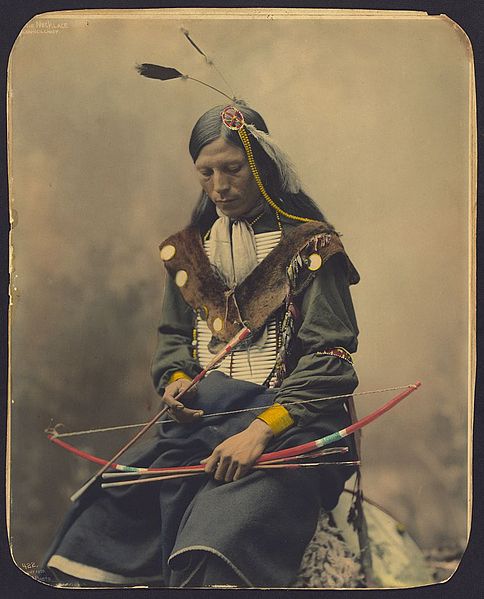 Chief Bone Necklace
Chief Bone Necklaceof the Oglala Lakota, 1899.
– The appropriateness argument: There are virtues of social appropriateness, which include matters of dress, cosmetics, and other standards of appearance. Judging whether we comport with these standards, or fail or neglect or choose not to comport with them, is relevant to judging character. (This is the Emily Yoffe, a.k.a. Dear Prudence argument: “We care because we’re group-living social animals, and there are certain accepted codes of behavior in various settings.”)- The concomitants argument: Good character leads to happiness, which has an appearance, which can be judged visually. Likewise for bad character.- Common-belief argument: It is often thought that portraiture uniquely reveals the character of the person depicted. Consider the adage that painters show us how the face at any age may be revealed as the face the subject of the portrait deserves.Khawaja’s purposes for the talk were just to outline the terms by which we might approach the question, but he indicates briefly at the end that he doesn’t think the “pro” arguments hold up, at least not very strongly, and so we should not judge a person’s character based on his or her appearance. Or, he says, if there is some connection between the two, it is so weak that we should make sure such judgments stay in the private sphere (or spheres, as it were).
This is a dense and complicated subject, on which Khawaja has written a lengthy paper, and I haven’t given full justice to his account here — probably I’ve misunderstood parts of the argument too. That said, I think Khawaja is a bit too quick to dash the intuitive connection between appearance and character, despite having well presented the case for it. Part of what he seems to be after with this talk is something very important: the “danger” argument he described only begins to hint at just how dangerous is the idea of pre-judging, or passing final judgment, on a person’s character based on his or her appearance.Particularly relevant today is the “cult of beauty” he mentions: we assign inordinate status to people who, through no effort of their own, are born beautiful, while the plain or unattractive are disadvantaged. Something he didn’t mention in the talk that I find particularly bothersome, and that is as old as time but probably worse than usual today, is our tendency to react with distaste towards the elderly, and disgust towards the disabled. These are all reactions we would do well to shake ourselves of — but I think the answer is not to ignore our evaluations of appearance, but to teach ourselves to treat them with initial hesitance, and to learn how to better cultivate them.
First, the “concomitants” argument deserves more emphasis. It’s not just that happiness might indicate a life well lived, which can be a sign of good character. People are very good at reading facial expressions — especially within their own cultures, but many expressions have been found by anthropologists to be universally recognizable. And there are greater depths to facial expressions that strongly indicate personality, and so character. For example, there is a subtle but apparent difference between how happiness looks on the face of a person when it comes from kindness, charity, and good humor as opposed to when it comes from smugness, greed, and pridefulness. One of the functions of portraiture is to highlight the differences between these.There are many other aspects to appearance, of course, that are relevant to judging character. When you consider a word like “comportment,” it becomes clear how difficult it is to strictly separate appearance from behavior, and behavior is clearly relevant to judging moral character. At one point, Khawaja noted that he teaches criminal justice majors, and has found that law enforcement organizations and the public alike think cleanliness and neatness in appearance are related to trustworthiness in enforcing the law. But he doesn’t think this connection necessarily holds: certainly there is no reason that a person who looks scruffy or unshaved cannot be trustworthy.I asked him whether police officers should wear uniforms, and he said yes, but only so they are easily identifiable as police officers. In effect, he argues that while we do have standards of social appropriateness when it comes to appearance, we should not, at least not as a matter of policy or practice. Should doctors wear uniforms, then, I ask? He says no, but the Q&A ends before I get a chance to follow up.
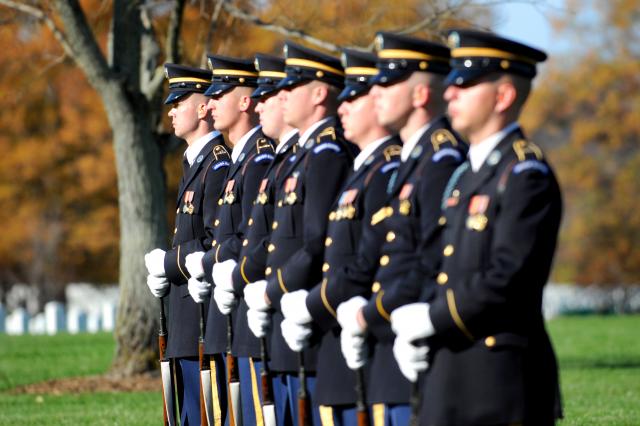 U.S. Army ceremonial uniforms
U.S. Army ceremonial uniformsI think the matter becomes more clear when you consider comportment in the military. Militaries place a strict emphasis on discipline in all aspects of appearance — neat uniforms, clean haircuts, rigid, formal salutes, and so forth. Are these merely a means of signaling conformity to the standards of a group? If so, are they superfluous to understanding and acting in accordance with those standards? Or might participating in a set of rituals exclusive to one group actually be an important means of inducing a person to actually reason and act as if he were a member of the group and its traditions? (And isn’t becoming a member of some tradition or practice crucial, on MacIntyre’s account, to exercising virtue?)Similar points can be made — though they have to be done carefully, as we will see — about the way people shape their appearances more generally, including the way they choose to dress and use cosmetics, especially as an exercise of style. These can also rightly be seen as aspects of the way individuals embrace the beauty of the human form, and display their possession of it, in all its varieties — which is something we should be attuned to and celebrate.But the more important point for this discussion is hinted at in a position MacIntyre outlines in After Virtue: appearance is never purely a matter of aesthetics. Visual perception always depends on theories — and might this not include theories about other people? Put simply: doesn’t the way a person appears change as you get to know him? At a basic level, when you come to admire or love someone, they become more pleasing in appearance, and when you come to dislike or hate someone, they become displeasing. (Deeper contours of character, one might think, could also be revealed in appearance as you get to know someone.)I would contend that these are good and just responses. In fact, they provide the basis for believing that attractiveness (and attraction) is not solely a matter of appearance. Holding this idea does justice to the notion that a person, not just in appearance but in character, can be “beautiful” or “ugly.” It takes us away from what Khawaja rightly notes is a false idea that we all do or should evaluate the beauty of others in the same way. (If this were true, it would imply, among other things, that everyone who tells his or her spouse that he or she is the most beautiful person in the world is lying, except for one.)This idea could also have the specific effect of teaching us to treat our initial evaluations of appearance to be suspect but capable of refinement, in the same way we do evaluations of character itself. Our reaction to people who are disfigured should not be to feel disgust and then decide whether to legitimize or ignore our disgust; rather, it should be to humanize our response to the person himself such that we can experience his appearance as beautiful rather than disgusting.
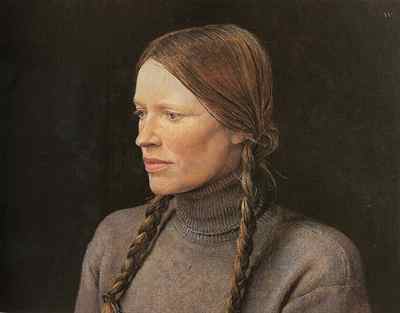 Andrew Wyeth, Braids, 1979.
Andrew Wyeth, Braids, 1979.This seems to be central to the value of portraiture — as Khawaja mentioned, and as Charles Rubin has insightfully discussed on this blog. It is not coincidental that some of the best portrait and figure painters choose as their subjects not the most conventionally beautiful human subjects, but ones that might be considered plain or unattractive. The Helga paintings of Andrew Wyeth are a particularly famous example.There is a deeper point about appearance here, both for and against the idea of linking it to moral character: probably a lot of what is at stake in a person coming to “deserve” the face he has is that people are treated as if their character were linked to their appearance, whether they deserve it or not. Naturally beautiful people probably tend to be treated better in life than others, and so are more prone in the first place to have a pleasant disposition, whereas someone who is disfigured may become bitter as a result of his likely treatment.But, of course, crucial for character is how we fare with things that are beyond our control, including our own natures. So in someone who is aesthetically beautiful, unkindness to others may indicate an exceptionally weak character, while in someone who is disfigured, affability and cheer may indicate an exceptionally strong character. (And both character traits would, and should, cause us to treat and view the person contrary to how we might otherwise be prone based on their raw appearance.)
I know you’ve been waiting for it, so here is the lesson about transhumanism: Khawaja seems to be continuing what I consider a basically noble progressive project teaching that, to paraphrase the famous line, a person should not be judged based on the color of his skin (or his immediate attractiveness) but on the content of his character. But once we say that a person’s physical form, particularly his appearance, not only can but should be a matter of his total control, we perversely then should judge a person based on superficial aspects of appearance. We can now legitimately find distaste at an ugly person for not having the good sense or the courage to slice and dice her face to conform to others’ standards of beauty. The same point applies not only to attractiveness, but to things like skin color and other aspects of race, not to mention novelties of self-modification.Social pressures that already induce people to focus excessively on the most immediate aspects of their appearance now become imperatives to exact more permanent changes on the body, whether through plastic surgery or implants or genetic modification. It’s a difficult distinction to make, but one could argue that this is the point at which a person’s concern with his or her own appearance crosses from a potentially good exercise in exploring and displaying the beauty of the human form to an implicit rejection of that form.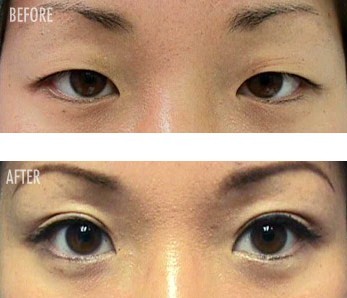 This is not just hypothetical, but already becoming a reality. As we’ve noted here before, transhumanists like Kyle Munkittrick have celebrated Asians carving their faces up to look more like white people (a continuation of the early-twentieth-century trend in which blacks were encouraged to chemically straighten their hair so they would appear more white), while many transhumanists celebrated a young woman who self-mutilated through implants as a supposed sort of self-expression.It’s worth asking how we ought to regard the character of someone who looks aesthetically beautiful due only to non-reconstructive cosmetic surgery and other elective enhancements. If there seems to be something of a cultural distaste arising for people who look too “fake” and “plastic,” perhaps it is because we sense that there is something inauthentic — not only in their appearance but in their characters. This notion indeed seems to throw some cold water on the idea that transhumanist ambitions are truly a means of liberating the self, when it is perhaps closer to the truth to say that they shackle it.[NOTE: Prof. Khawaja has promised to send in a response to this post. I’ll put that up as a new post and add a link here when it comes through.]
This is not just hypothetical, but already becoming a reality. As we’ve noted here before, transhumanists like Kyle Munkittrick have celebrated Asians carving their faces up to look more like white people (a continuation of the early-twentieth-century trend in which blacks were encouraged to chemically straighten their hair so they would appear more white), while many transhumanists celebrated a young woman who self-mutilated through implants as a supposed sort of self-expression.It’s worth asking how we ought to regard the character of someone who looks aesthetically beautiful due only to non-reconstructive cosmetic surgery and other elective enhancements. If there seems to be something of a cultural distaste arising for people who look too “fake” and “plastic,” perhaps it is because we sense that there is something inauthentic — not only in their appearance but in their characters. This notion indeed seems to throw some cold water on the idea that transhumanist ambitions are truly a means of liberating the self, when it is perhaps closer to the truth to say that they shackle it.[NOTE: Prof. Khawaja has promised to send in a response to this post. I’ll put that up as a new post and add a link here when it comes through.]

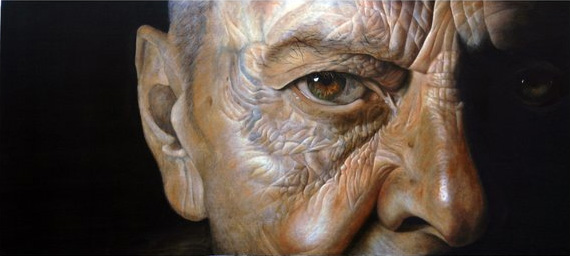
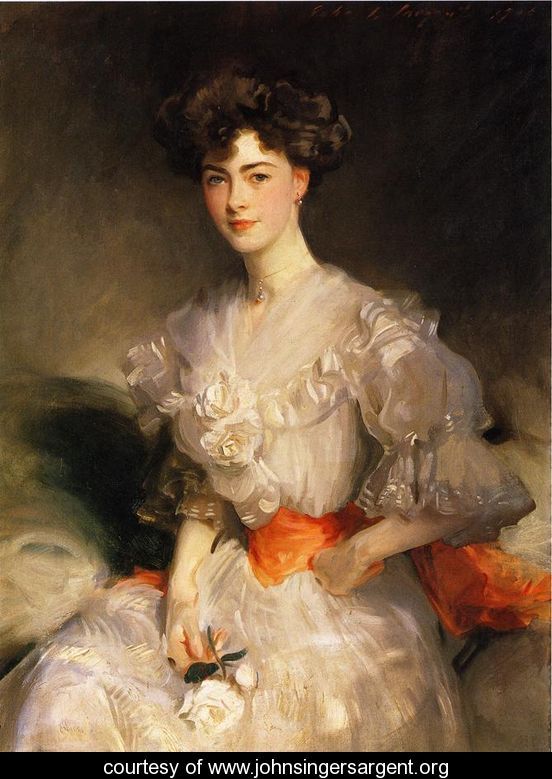

> [H]ere is the lesson about transhumanism:
> [O]nce we say that a person’s physical
> form, particularly his appearance, not
> only can but should be a matter of his
> total control, we perversely then should
> judge a person based on superficial
> aspects of appearance. We can now
> legitimately find distaste at an ugly
> person for not having the good
> sense or the courage to slice and dice her
> face to conform to others’ standards of
> beauty. . . This notion indeed seems to
> throw some cold water on the idea that
> transhumanist ambitions are truly a means
> of liberating the self, when it is perhaps
> closer to the truth to say that they
> shackle it.
I'm reminded of a passage from William Gibson's _Neuromancer_: "Ratz was tending bar, his prosthetic arm jerking monotonously as he filled a tray of glasses with draft Kirin. He saw Case and smiled, his teeth a webwork of East European steel and brown decay. . . The bartender's smile widened. His ugliness was the stuff of legend. In an age of affordable beauty, there was something heraldic about his lack of it."
;->